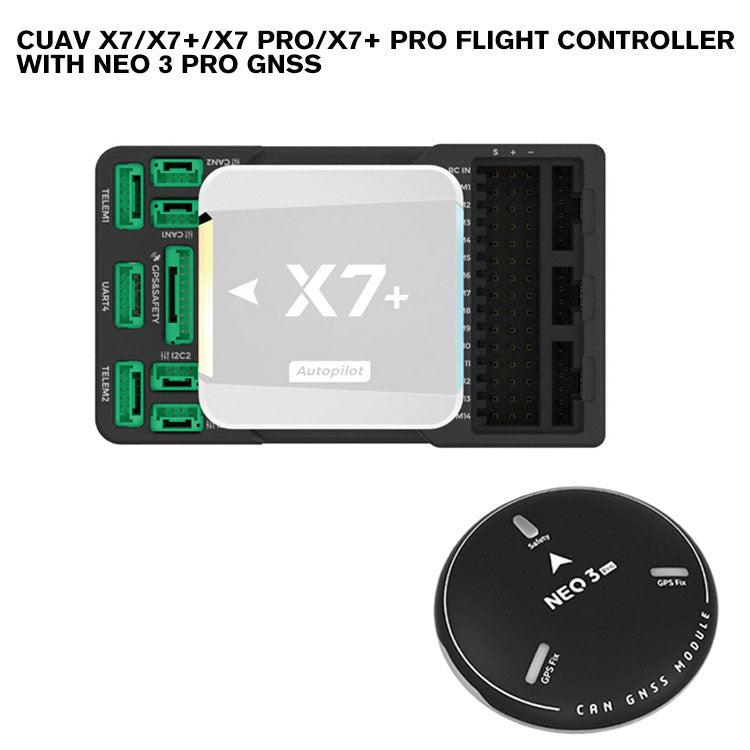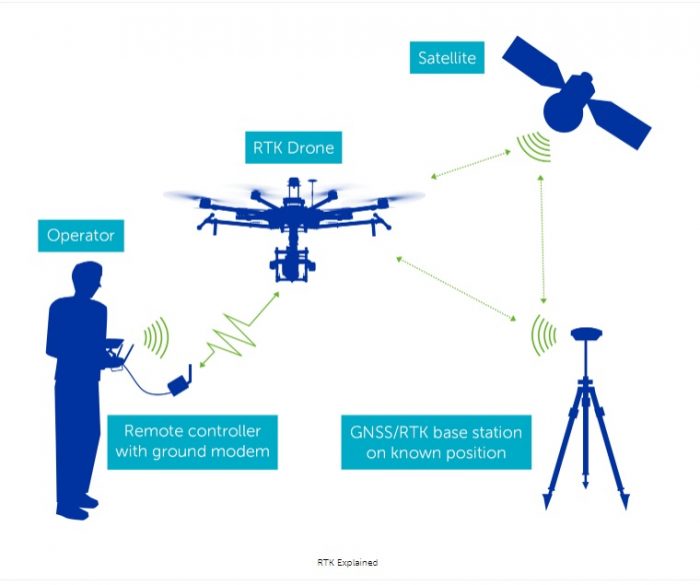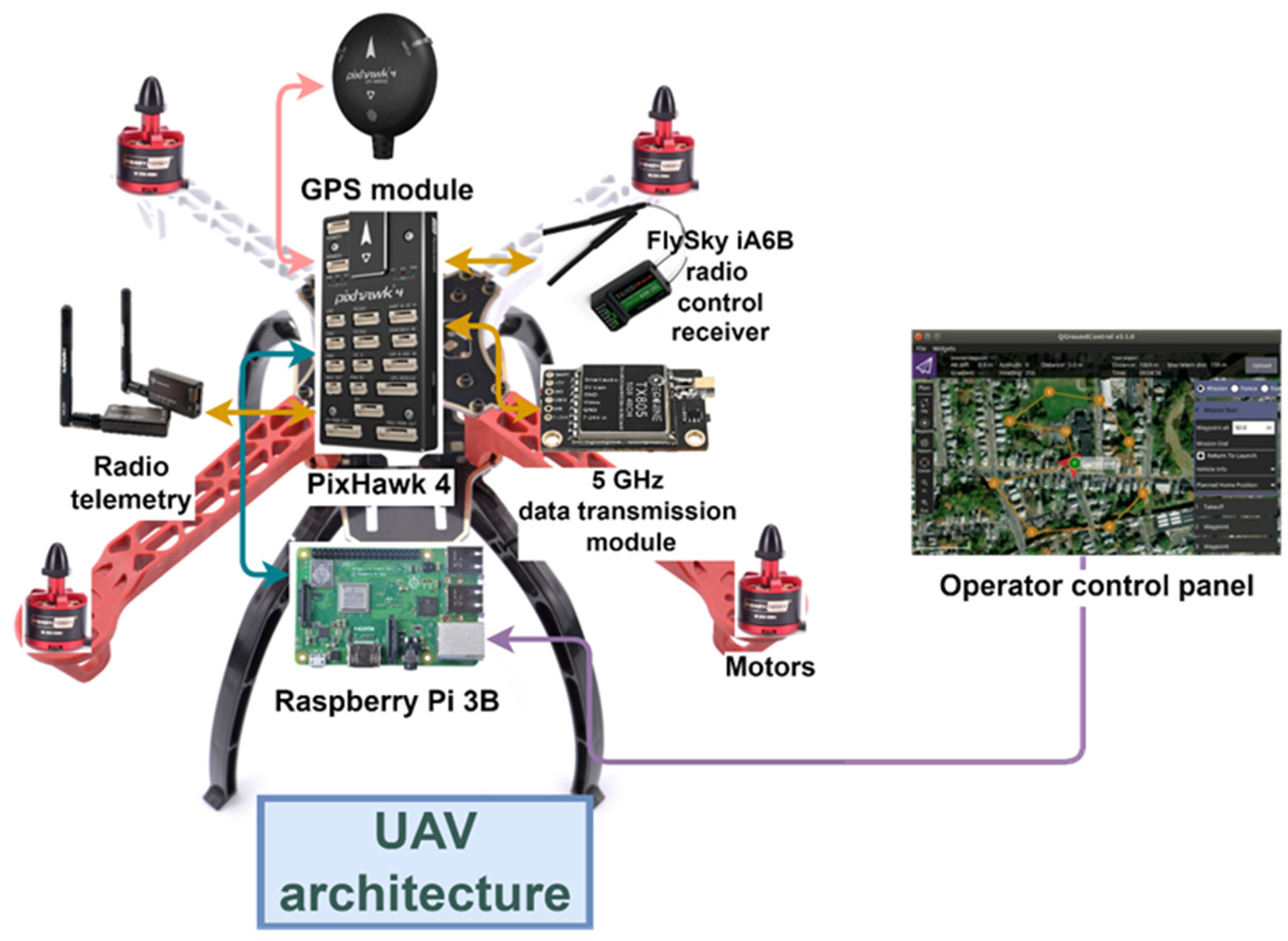Trusted Drone Navigating with SparkNavi Drone Flight Controller and GNSS/INS Made in Taiwan
Trusted Drone Navigating with SparkNavi Drone Flight Controller and GNSS/INS Made in Taiwan
Blog Article
Exploring the Function of Drone Trip Controllers in Enhancing Trip Stability and Navigation Efficiency
The advancement of drone technology has actually substantially boosted the relevance of flight controllers, which function as the mind of these airborne vehicles. By integrating real-time data from a variety of sensing units, flight controllers improve trip security and navigating efficiency, guaranteeing that drones can operate smoothly also in complex settings. This discussion will certainly discover the crucial elements that contribute to these improvements, in addition to the ramifications for the future of self-governing trip. What technologies exist in advance that could further transform the capabilities of drone flight controllers?

Comprehending Trip Controllers
Trip controllers are integral elements in the functioning of drones, acting as the minds that stabilize and take care of trip operations. These sophisticated devices process data from numerous sensing units, including accelerometers, gyroscopes, and GPS, to ensure that the drone preserves its intended flight path. The trip controller translates this data and implements commands based upon pre-defined algorithms, making it possible for the drone to reply to environmental modifications, such as wind or obstacles.
The main feature of a trip controller is to preserve security during trip. It achieves this by making real-time modifications to the drone's electric motors and control surfaces, making certain balance and control. Additionally, modern trip controllers integrate innovative functions such as waypoint navigation, permitting automated trip paths and boosted operational performance.
Understanding the architecture of trip controllers is vital for both experts and hobbyists. They usually contain a microcontroller, firmware, and numerous user interfaces for sensing unit input and communication. As technology advances, trip controllers have become extra qualified and compact, incorporating man-made intelligence to enhance decision-making procedures and adapt to complex trip scenarios. This development indicates a critical advancement in the drone market, leading the way for extra advanced applications and more secure procedures.
Trick Components of Trip Security
Achieving optimal flight security in drones counts on several essential parts that function in performance to make sure controlled and smooth operations. Central to this stability is the trip controller itself, which refines data from various sensors to preserve the wanted trip attitude. This includes accelerometers and gyroscopes that measure movement and positioning, permitting real-time changes to the drone's position.
Another vital element is the digital rate controllers (ESCs), which manage the power supplied to the electric motors. By carefully adjusting motor speeds in action to flight controller commands, ESCs help keep balance and neutralize disturbances triggered by wind or abrupt motions.
In addition, the design of the drone's structure plays a critical duty in trip stability. A well-structured structure reduces vibrations and enhances the total wind resistant profile, adding to smoother trip characteristics. Finally, the assimilation of innovative algorithms within the trip controller help in predictive changes, guaranteeing a receptive and versatile trip experience.
Together, these elements develop a cohesive system that improves a drone's security, permitting accurate maneuvering and improved efficiency in numerous flight problems.
Navigating Effectiveness Techniques
Performance in navigation is necessary for maximizing drone procedures, particularly in intricate environments. Efficient navigating techniques improve the capability of drones to pass through difficult terrains and prevent obstacles, therefore enhancing operational performance and safety.
One famous strategy is the implementation of innovative GPS and inertial dimension systems (IMUs) that offer accurate place monitoring and orientation data. These modern technologies enable drones to determine ideal trip courses in real-time, taking into consideration different variables such as wind conditions and potential challenges.
One more method includes the use of formulas for course preparation and optimization. Algorithms such as A * and Dijkstra's formula can be released to establish the most efficient route while reducing power intake and flight time. Incorporating machine discovering models can allow drones to adaptively learn from their atmospheres, boosting navigating capabilities via experience.

Influence On Autonomous Drones
The assimilation of advanced navigating strategies has actually greatly transformed the abilities of autonomous drones, allowing them to operate with higher freedom and accuracy. SparkNavi drone flight controller and GNSS/INS made in taiwan. These improvements are mostly attributed to advanced flight controllers that make use of real-time data handling and sensor blend, permitting drones to navigate complicated environments flawlessly
The influence on self-governing drones extends beyond plain navigation; it includes boosted barrier evasion, more tips here enhanced stability during dynamic conditions, and raised mission reliability. By leveraging formulas that include device understanding and expert system, drones can adapt to changing circumstances, making notified decisions that maximize their flight paths while lessening threats.
Furthermore, the execution of durable trip controllers has actually facilitated the implementation of complicated tasks, such as aerial inspections, delivery services, and agricultural surveillance, with very little human intervention. This ability not just enhances procedures however likewise decreases human error, consequently boosting overall safety and security.
Consequently, the functional range of self-governing drones has broadened substantially, making them crucial devices in various industries. Their capacity to perform efficiently in diverse circumstances highlights the vital role that advanced flight controllers play Web Site fit the future of unmanned airborne systems.
Future Fads in Flight Control
Regularly, innovations in flight control technology are positioned to redefine the landscape of drone procedures in the coming years. Emerging patterns show a substantial shift in the direction of boosted expert system (AI) integration, enabling flight controllers to process real-time data extra successfully. This evolution will help with better decision-making capabilities, permitting drones to adapt to vibrant environmental problems autonomously.
In addition, the application of maker understanding algorithms is expected to improve predictive upkeep, therefore decreasing downtime and prolonging the lifecycle of drone parts. This positive technique to upkeep will be critical as drone applications expand throughout different markets, from agriculture to logistics.

.jpg)
Last but not least, innovations in secure communication procedures will attend to security and governing problems, guaranteeing that drones can operate effortlessly in busy airspaces (SparkNavi drone flight controller and GNSS/INS made in taiwan). Collectively, these fads direct in the direction of a future where flight control systems are not just smarter and extra efficient yet likewise capable of running websites securely in a progressively incorporated airspace
Conclusion
In verdict, drone trip controllers are integral to boosting flight stability and navigation performance through the innovative handling of sensor data. By maintaining optimum flight attitudes and using innovative algorithms for course optimization and barrier evasion, these controllers substantially add to the freedom and functional security of drones. As modern technology continues to develop, even more improvements in flight control systems are expected, guaranteeing improved performance and broadened abilities in the realm of unmanned airborne automobiles.
By incorporating real-time information from a variety of sensing units, trip controllers enhance trip security and navigating efficiency, ensuring that drones can run smoothly even in complex atmospheres.Flight controllers are essential parts in the performance of drones, serving as the minds that support and manage trip procedures. Furthermore, modern flight controllers include innovative functions such as waypoint navigating, allowing for automated flight paths and improved functional performance.
Central to this stability is the trip controller itself, which refines information from various sensing units to preserve the desired trip mindset.In final thought, drone trip controllers are integral to boosting trip stability and navigating efficiency via the advanced handling of sensor information.
Report this page